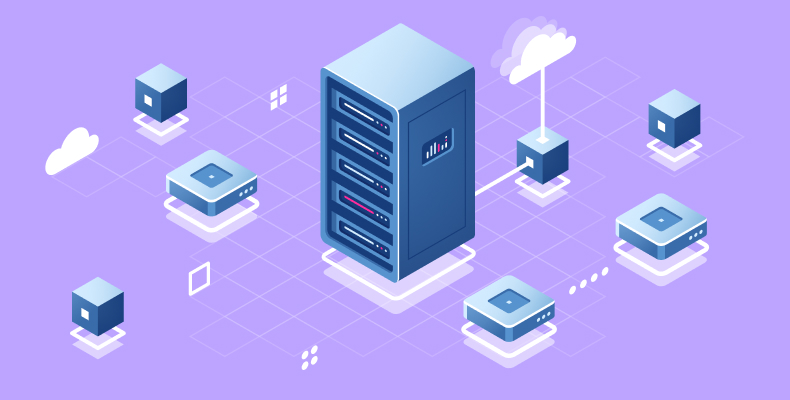We use cookies to ensure we give you the best experience on our website. By clicking Agree you accept our Privacy and Cookies Policy.
What is the best cloud deployment model? Types of cloud computing that will benefit your business

 8 minutes read
8 minutes read
Content
What is cloud computing?
Before we dive deeper, let’s first explain what cloud computing is in simple terms. By definition, cloud computing is the on-demand delivery of computing resources. It includes storage capacities, virtual databases, networking solutions, software, and other services. Customers typically pay only for cloud services they use, reducing operational and maintenance costs.
As the popularity of cloud computing grows, various models and deployment methods emerge to meet the users’ needs. Let’s check the types of cloud deployment with examples.
5 types of cloud computing deployment
What is cloud deployment? Simply put, it is the way cloud infrastructure is implemented, hosted, and accessed. Although there are different models of cloud application deployment, all of them provide virtual computing resources for serverless processing and storage.
Although cloud deployment models are often confused with cloud computing services, they are not quite the same. Cloud deployment refers to the size, location, hosting type, and accessibility of a cloud environment. On the other hand, the definition of cloud services refers to all remote cloud solutions available through the internet, such as SaaS, IaaS, and PaaS. If you’d like to read more about these, take a look at our article about cloud services.
Public cloud
Public cloud can be used by anyone over the internet. Users share cloud computing services offered by third-party providers and only pay for resources they need. External cloud providers are responsible for hardware, network, maintenance, and updates. They also provide advanced functionality for creating web applications.
Since public cloud vendors hold large amounts of storage space, users can easily scale their software. So, when you choose public cloud storage, you can get as much storage capacity and as much processing power as you need by connecting through a user-friendly interface.
Public cloud examples
Here are the most widely used providers of cloud services:
- AWS. Amazon cloud services include over 170 products for software developers, such as cloud computing and storage solutions. AWS offers advanced analytics and integration with the extensive list of Amazon services that grasp everything from database migration to game tech, media, IoT, front-end. mobile, VR/AR, and even robotics.
- Microsoft Azure. One of the world’s most popular cloud solutions provides various tools for application development, deployment, and management. Moreover, it allows users to integrate with blockchain, data management, artificial intelligence, and other cutting-edge services. Sounds promising? Our skilled Azure DevOps experts know how to leverage the capabilities of Microsoft cloud computing services to level up your business.
- Oracle Cloud. This IaaS solution provides functionality for storing and deploying applications. It’s a typical example of an enterprise cloud that offers a secure and feature-rich cloud infrastructure for SME and large enterprises.
- Google Cloud Platform. This solution offers the same infrastructure that is used for Gmail, Youtube, and Google search. Besides data storage, it provides a toolkit for team collaboration and up-to-date security.
What are the benefits of a public cloud?
There are many benefits of using public clouds for your organization:
- Hassle-free cloud infrastructure management.
- 24/7 uptime.
- Easy to scale up and down.
- Global accessibility.
- Cost reduction.
- Flexibility.
- Fast deployment.
Private cloud
A private cloud or so-called corporate cloud runs in a single-tenant environment with exclusive user access. That’s the main difference between public cloud vs. private cloud: private computing resources are exclusively dedicated to one organization and aren’t shared with other companies.
There are three types of private cloud deployment in terms of hosting:
- On-premise cloud. The company manages, runs, and maintains their internal data center. It means they operate on-site servers and software using their own resources.
- Hosted cloud. The company rents cloud server infrastructure from an offshore organization.
- Third-party management. The company hosts their own premises but outsources server management and maintenance to a third-party vendor.
Private cloud examples
These companies provide the best cloud computing on premise:
- OVH. It’s an example of a hosted private cloud that merges the scalability with a dedicated hardware infrastructure.
- HP Data Centers. They offer on premises based on the company’s consumption levels, providing great agility and security.
- Openstack Private Cloud. This IaaS platform provides efficient tools for adding servers, storage components, and networking to a company’s cloud.
- VMware Private Cloud. It enables to join all resources from physical servers into a centralized pool and allocate computing power across virtual machines.
What are the benefits of a private cloud?
A private cloud is less flexible than a public cloud, but it offers complete independence, followed by several business advantages:
- Customizable hardware and setup.
- Enhanced security.
- More control.
- Dedicated computing resources.
Private cloud solutions are suitable for companies that want to fully control their computing resources and databases of their corporate systems. At Blackthorn Vision, we developed cloud-based software for representing a company’s structure. OrgWeaver handles a vast number of customers and can be easily customized to fit an organization’s specific needs.

Hybrid cloud
Hybrid cloud solutions allow you to merge public clouds with private clouds within one organization. The idea is to enable seamless interaction between two platforms, moving data and software without a hitch. In this way, you can leverage the potential and benefits of both types of cloud computing. Hybrid clouds allow running non-critical activities on a public cloud while placing all sensitive operations on a private cloud.
Another approach to hybrid cloud computing implies using a private cloud as a primary environment for data storage and hosting proprietary applications. When the organization needs to increase computing power, they use public cloud computing resources to supplement the primary cloud. This approach allows companies to handle increased traffic and scale their software without spending extra costs on new hardware or infrastructure.
Hybrid cloud examples
Here are some of the most popular examples of hybrid clouds:
- Openstack and AWS.
- Microsoft Azure stack and Azure.
- AWS and VMware.
What are the benefits of a hybrid cloud?
Hybrid clouds provide a bunch of tangible advantages for business, including:
- Improved security and privacy compliance.
- Flexibility and scalability.
- Independence from a single cloud provider.
- Cost-effectiveness.
- Ease of migration from one type of cloud to another.
The hybrid cloud model has excellent capabilities for security management. Blackthorn Vision built a platform that simplifies the security adjustments of a hybrid cloud environment and creates additional protection from unauthorized access. MyCloudGuard generates a real-time graph of cloud data, infrastructure, and identities. The solution is able to learn users’ behavior patterns to safeguard authentication on a hybrid cloud.
Community cloud
A community cloud deployment is similar to a private cloud with one difference: the number of users. While a private cloud is individually owned by one company, a community cloud is used by multiple organizations. The tenants of a community cloud infrastructure primarily have similar backgrounds, unified security, and performance standards.
Multi-tenant cloud architecture allows companies to share their computing resources and boost collaboration. A centralized community cloud can facilitate the development, management, and implementation of joint projects.
Community cloud examples
IBM SoftLayer Cloud is a well-known example of a community cloud. IBM works with the local partners to deploy and run community clouds that target a specific industry. For instance, federal agencies choose the community cloud model to securely exchange data between departments.
What are the benefits of a community cloud?
There are several unique advantages of using community cloud:
- Enhanced security and privacy.
- Industry focus.
- Lower costs.
- Simplified data sharing and convenient collaboration.
Multicloud
Multicloud combines two or more cloud computing services from various providers. There are many variations of multicloud environments: fully private, fully public, or hybrid. By distributing computing resources among several vendors, you minimize downtime and data loss risks. You can also increase your existing computing power and storage when needed.
Multicloud examples
Since multicloud is rather a combination of other cloud computing models than a separate model, any public, as well as private cloud provider, can fit this category. Examples of multicloud vendors include AWS, IBM Cloud, Openstack, Rackspace, Azure, and others.
What are the benefits of multicloud?
Companies choose multicloud deployment model for the following reasons:
- Independence from a single vendor.
- Choice of services.
- Risk avoidance.
- Security and regulatory compliance.

Types of cloud computing: which one is better for your business?
Each cloud deployment model is meant to solve different problems. Answer these questions to make sure you pick the appropriate type of cloud computing:
- Does your user activity grow fast or with unpredictable spikes in demand?
- Do you hold any sensitive user data that cannot be shared on a public server?
- What is your budget? Are you able to invest in your own data center or prefer to pay a subscription?
- How much time and budget can you spend on employee training?
- Are you ready to maintain servers using your own resources?
- How flexible are your processing and storage requirements?
- Do you need to comply with any laws or industry regulations in your country?
Once you’ve untangled the requirements, you will surely get a clear vision of the cloud deployment model that fits your organization’s needs. The next step is to pick the right provider and set everything up.
Blackthorn Vision provides end-to-end cloud development services from setting up the infrastructure and migrating all data to the cloud, to creating top-notch turnkey cloud applications. Our skilled DevOps engineers leverage the benefits of cloud computing to skyrocket the growth of your business.






































































